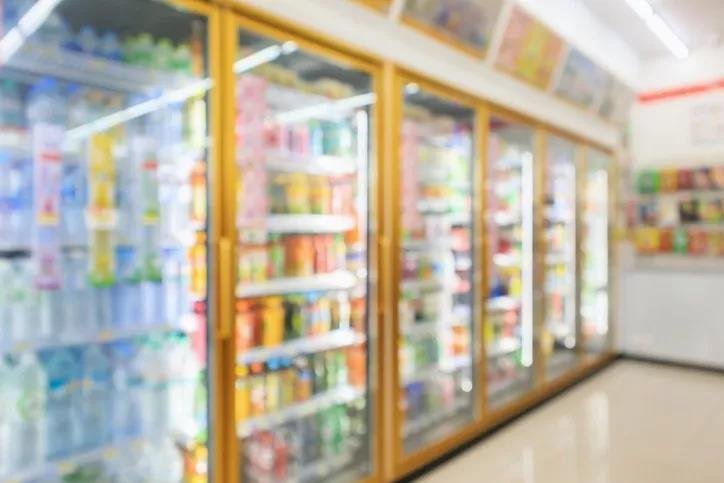
Although soda dominated the beverage shelves in the 1990s, today’s consumers are more likely to look for functional drinks.
Recently, Kaidu, a data company, highlighted the changes in consumption in the US beverage industry over the past 30 years in its consumer behavior research report. The food and beverage market is still full of sugary processed products, but overall, consumers have more healthy product options than they did 30 years ago.
Today, consumers are looking for products that actively improve their happiness, but the real advantage is functional products-and the key question for manufacturers is what additional features or benefits their products can provide to consumers.
More functions, less sugar.
In the late 1980s and 1990s, soda was the dominant beverage in the United States, and there was fierce competition between Coca-Cola and Pepsi. By the mid-1990s, Starbucks launched the popular Frappuccino and Red Bull went public, thus solidifying Americans’ love of caffeine. At the beginning of the 21st century, carbonated beverage brands began to succumb to the changing needs of consumers. Coca-Cola, for example, has made a big push into drinking water with the launch of the water brand Dasani.
Kaidu believes that between 2000 and 2010, beverage brands learned to innovate not just for the sake of innovation. On the contrary, identifying and targeting changing consumer behavior can bring the brand the best chance of success. Countless health drinks have emerged in the past decade, some of which have spawned new beverage categories. Vita Coco introduced coconut water, while Bai’s mixed drink blurred the line between water and fruit juice.
Kaidu found that the number of occasions for “relaxation” drinks has increased by 48% since 2008. Solo drinking occasions accounted for 46% in 2018, up from 36% in 2013. Sixty-five percent of drinks were served with meals in 1987, but by 2018 that proportion had fallen to 53 per cent, Kadu said.
“driven by so much information, consumers are looking for the next way to maximize functionality, but there are still stories.
The brand needs to tell us where the product is made and how it works. “
The switch of the occasion
If beverage brands and categories are to succeed in today’s environment, they must first understand the competition, target the mindset of specific consumer groups, and keep product information relevant, said Ross Smith, director of consumer insight.
“In the 1980s, soda was the only drink that met the needs of taste, fun, enjoyment and food. Now, drinks such as sparkling fruit juices and sparkling flavored water have entered the market in different ways and added additional features. Therefore, every enterprise needs to consider that as the market develops, their competitive groups will continue to expand, and the boundaries between these categories will become blurred. “
In the long run, beverage consumption has not changed much. In a week, there are still about 35 drinking occasions. But what really changes are the types of beverages, the objects of consumption and the reasons for consumption.
The Kaidu report stresses that people do not follow the traditional three meals a day, but eat and drink throughout the day. In the occasion between meals, the category of drinks began to develop in the direction of snacks, all-day nutrition and hydration. The occasion itself is becoming a little more complicated, says Smith. With the emergence of more and more new products and information, people become more and more “concerned”-they want to know what other functions a drink has besides the basic functions.
Winners and losers
Water is one of the fastest evolving beverages. According to Kaidu’s report, only 1/6 of people regularly drank bottled water in the 1980s; today that proportion has risen to more than half, while tap water accounts for 1/3 of all beverage consumption in the United States. A variety of aquatic products have also contributed to the development of this category, such as La Croix–, a traditional brand that has maintained its success through innovation, with more than 20 flavors, adding 3 million drinkers between 2014 and 2018.
Although instant coffee Folgers and Maxwell were once the protagonists of American families, hot coffee has gradually faded out of sight, Kaidu points out. These brands have reduced their weekly use by 82 million since 2013, equivalent to consumers consuming 4.2 billion cups of coffee elsewhere, according to Kaidu data.
Although the dairy industry has recently launched products such as grass-fed milk, organic milk, A2 milk and ultrafiltered milk, overall, the industry has not seen enough innovation to compete with emerging beverages that meet modern demand. Kedu says the penetration of dairy products in the US has fallen by 23 per cent since the 1980s. Carbonated drinks are arguably the most declining, failing to meet the needs, nutritional benefits and health options that people are looking for today. “the decline in soda sales is a good example of what happens when manufacturers and retailers shift their attention away from changes in consumer demand and habits. Other companies that have made the same mistake may soon find themselves in a declining category. “
